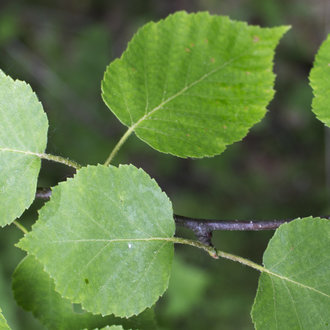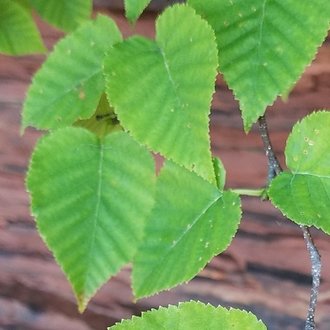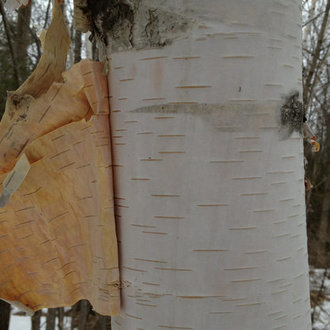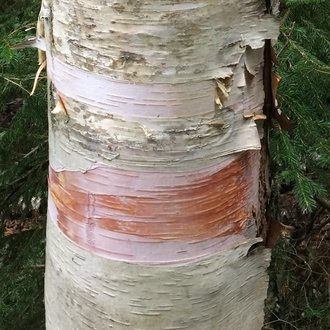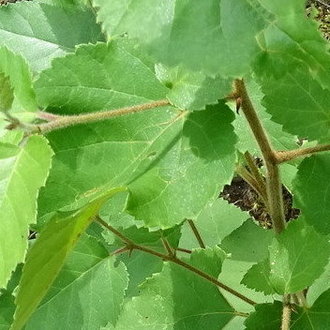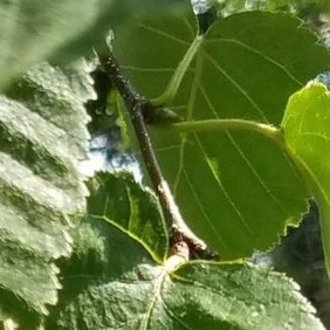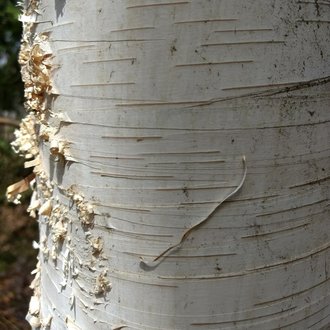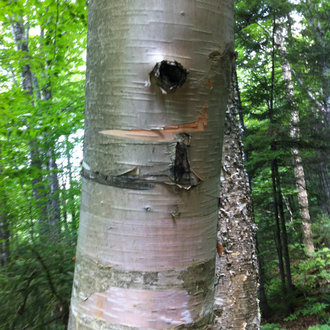Paper Birch vs Mountain Paper Birch
These two species are visually similar, and were once considered different varieties of the same species. In some cases, they can be distinguished with difficulty by bark color and leaf characteristics. Because all these characteristics vary from tree to tree, and because the species hybridize readily, it is not possible to definitively ID all trees.
Paper Birch (Betula papyrifera) | Mountain Paper Birch (Betula cordifolia) |
A native pioneer species found in a wide range of conditions in cold, northerly parts of North America. | A tree similar in appearance to paper birch, but found farther north and at higher elevations. |
Leaves usually have flatter to slightly rounded bases and fewer than 9 lateral veins, spaced more widely. Photo © aarongunnar, CC BY 4.0. | Leaves usually have cordate (heart-shaped) bases and 9 or more lateral veins, spaced closer together. Photo © Sarah Johnson, CC BY 4.0. |
Inner bark less reddish, usually more tan. Less contrast between outermost and inner layers. Bark tends to peel in thicker layers. Photo © marie, CC BY 4.0. | Inner bark often more pink or reddish. Often more contrast between more grayish outer bark and whiter inner layers. Bark tends to peel in thinner layers. Photo © Charlie Hohn, CC BY 4.0. |
Young twigs and petioles (stems connecting leaves to twigs) are hairy. Photo © Reuven Martin, Public Domain. | Young twigs and petioles are not hairy. Photo © Sarah Johnson, CC BY 4.0. |
Bark less shiny, more chalky or matte. Photo © Mark Apgar, CC BY 4.0. | Bark more shiny. Photo © charlie, CC BY 4.0. |
References & External Resources
These short lists show only links helpful for ID. For a complete list of references and resources also covering other aspects of ecology, visit the links section of the full article on each plant, which is the first entry here.



